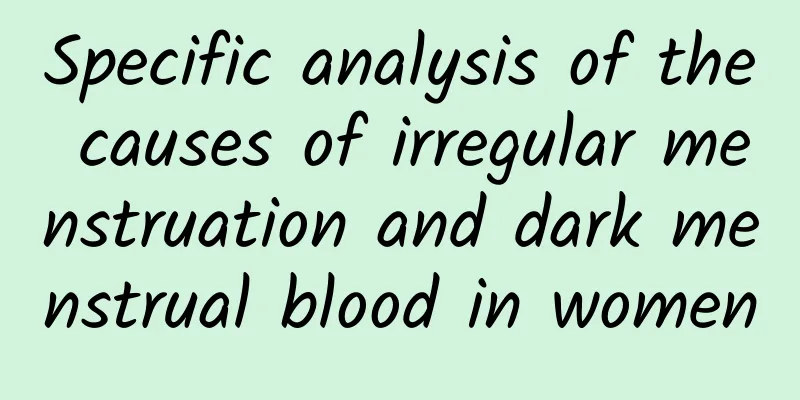What is the diagnosis of menopause?

|
A series of symptoms of menopausal syndrome appear, such as hot flashes, sweating, insomnia, headache, unstable blood pressure, palpitations, bone and joint pain, etc.; the reproductive organs gradually atrophy, causing vaginal dryness, vulvar itching, sexual dysfunction, and discomfort such as frequent urination, urgency, and inability to hold urine, and may also cause osteoporosis and abnormal blood lipid metabolism. Menopausal transition period and postmenopausal amenorrhea: On June 14, 1994, a working meeting on the progress of menopausal research in the 1990s was held in Geneva, proposing to abandon menopause and recommend the use of perimenopause and menopausal transition period. The regulations are as follows: ① Premenopause (pre-menopausal period): refers to the period of ovarian activity, including puberty to menopause ② Menopause (menopausal): refers to the last menstruation in a woman's life, which is often determined in retrospect. ③ Postmenopause: refers to the entire period from menopause to the end of life. ④ Menopause transitional period: refers to the period before menopause, that is, the transitional period from reproductive age to menopause, including the earliest clinical or blood hormone level signs of menopause (i.e., the beginning of ovarian function decline) until the last menstruation. ⑤ Peri-menopause: refers to the period before and after menopause in women, including the beginning of clinical or blood hormone level signs of menopause (i.e., the beginning of ovarian function decline), which lasts until 1 year after the last menstruation, that is, the menopause transitional period plus 1 year after menopause. Postmenopausal bleeding: Postmenopausal bleeding is not a disease, but a clinical symptom. With the continuous improvement of people's lives, women's life expectancy is gradually extended. One-third of their lives are spent after menopause, and a series of geriatric diseases follow one after another. Postmenopausal bleeding is one of the most common symptoms. Postmenopausal bleeding refers to vaginal bleeding that occurs one year after menstruation stops. It mainly refers to symptoms caused by non-organic, benign, and malignant lesions of the internal genitalia. The cause of postmenopausal bleeding should be sought for patients. With the development of medical science and the popularization of medical knowledge, people are more vigilant about postmenopausal bleeding, and the proportion of postmenopausal bleeding caused by malignant lesions is gradually decreasing. Foreign reports are less than 10%. It is mainly caused by non-organic lesions, followed by benign lesions. Domestic reports vary, about 20% to 50%. So, how should women avoid premature menopause? Breastfeeding is encouraged after childbirth, and the breastfeeding time should be extended as much as possible; women in childbearing age can use oral contraceptives for contraception. In addition, in terms of lifestyle habits, women should insist on drinking milk, eating fish, shrimp and other foods regularly, and exercising regularly, which are healthy and beneficial lifestyles. In particular, they should promote smoking cessation in public places and at home, and eliminate passive smoking, so as to avoid the harm of early menopause to women's health. |
<<: How to diagnose menopause?
>>: Diagnosis of premature menopause
Recommend
More attention should be paid to the nursing work of ovarian cysts
It is very important to take good care of ovarian...
What are the dangers of Bartholinitis?
The Bartholin's glands are located at the bac...
Can I wash my vulva for itching after pregnancy?
Can I use lotion if I suffer from vulvar itching ...
What are the precautions for bacterial vaginosis
What are the precautions for bacterial vaginosis?...
Experts explain what cervical hypertrophy is
Cervical hypertrophy is a relatively common gynec...
There is a way to save carrot legs! 3 Tips for Reducing Thigh Swelling
It’s chilly in winter, but it doesn’t reduce girl...
Does it hurt to have an abortion at three months of pregnancy?
The three months of pregnancy can only be cancell...
7 magic tools to help with recovery after COVID-19 diagnosis! Nutritionists teach you what to eat when you have a fever, sore throat, cough, or phlegm?
The number of confirmed cases of COVID-19 has exc...
Criteria for grading cervical erosion based on symptoms
By analyzing the symptoms of cervical erosion, th...
Common symptoms of uterine fibroids
Among gynecological diseases, uterine fibroids ar...
People with high body fat, "puff tribe", beware of the new three highs
Are you a "puff person" with high body ...
Painless abortion 13 days later, brown blood suddenly appeared
If brown blood suddenly flows 13 days after painl...
How to treat stomach pain but no menstruation
How to treat abdominal pain but no menstruation? ...
What to do if your abdomen is bloated after abortion
Many women are not suitable for pregnancy for var...
How to pay attention to details to prevent dysmenorrhea
Dysmenorrhea is a gynecological disease, and many...









